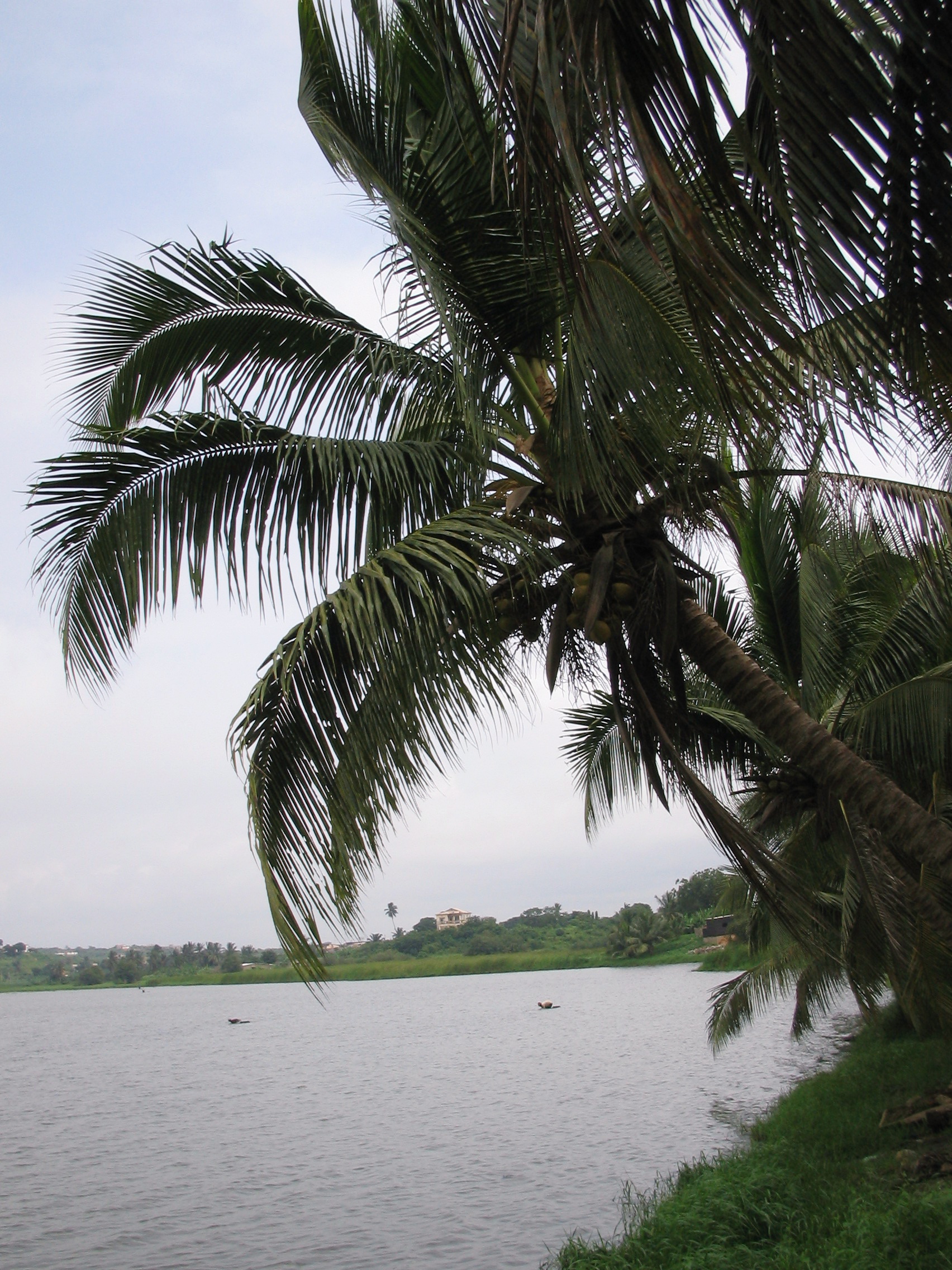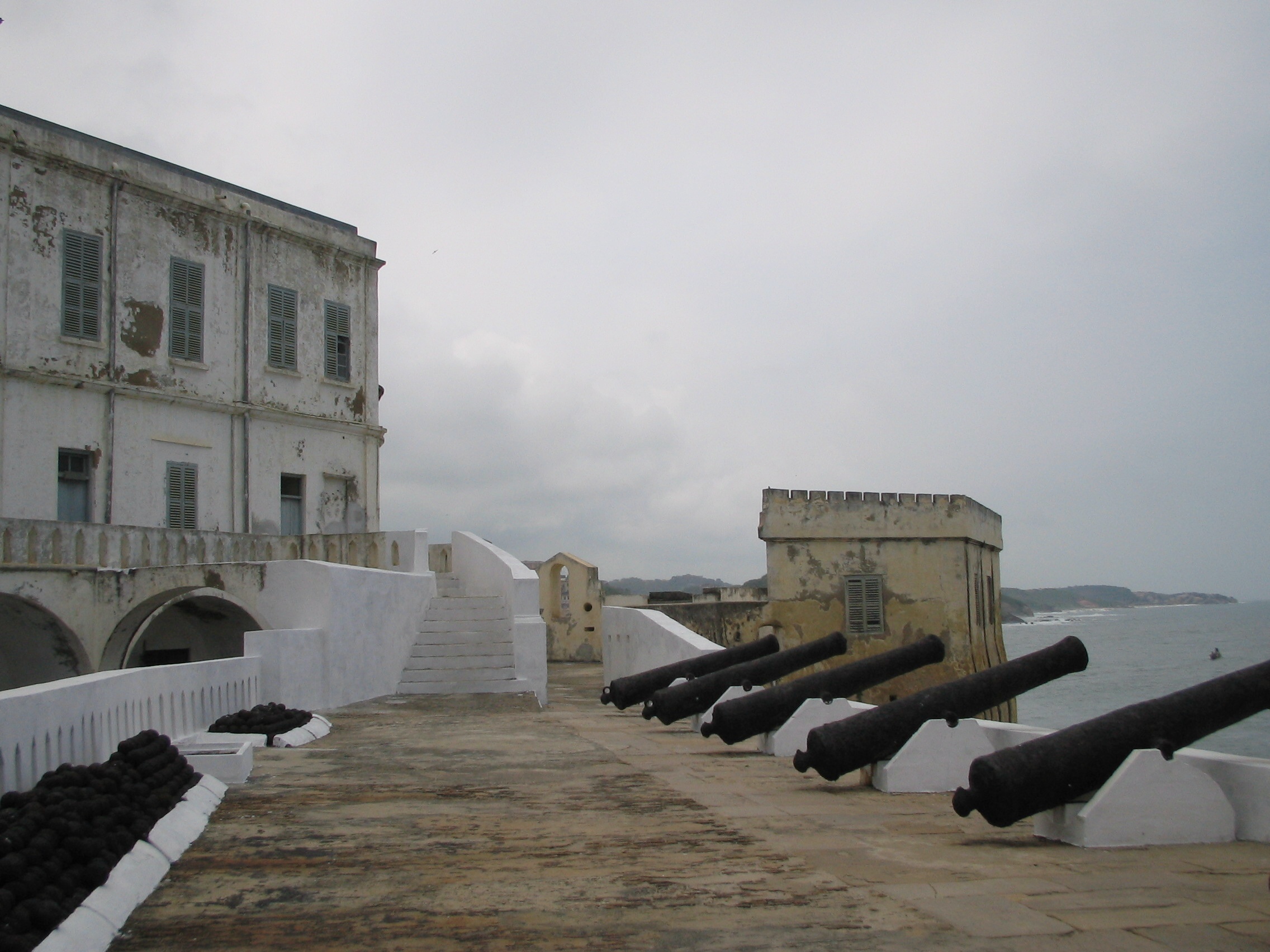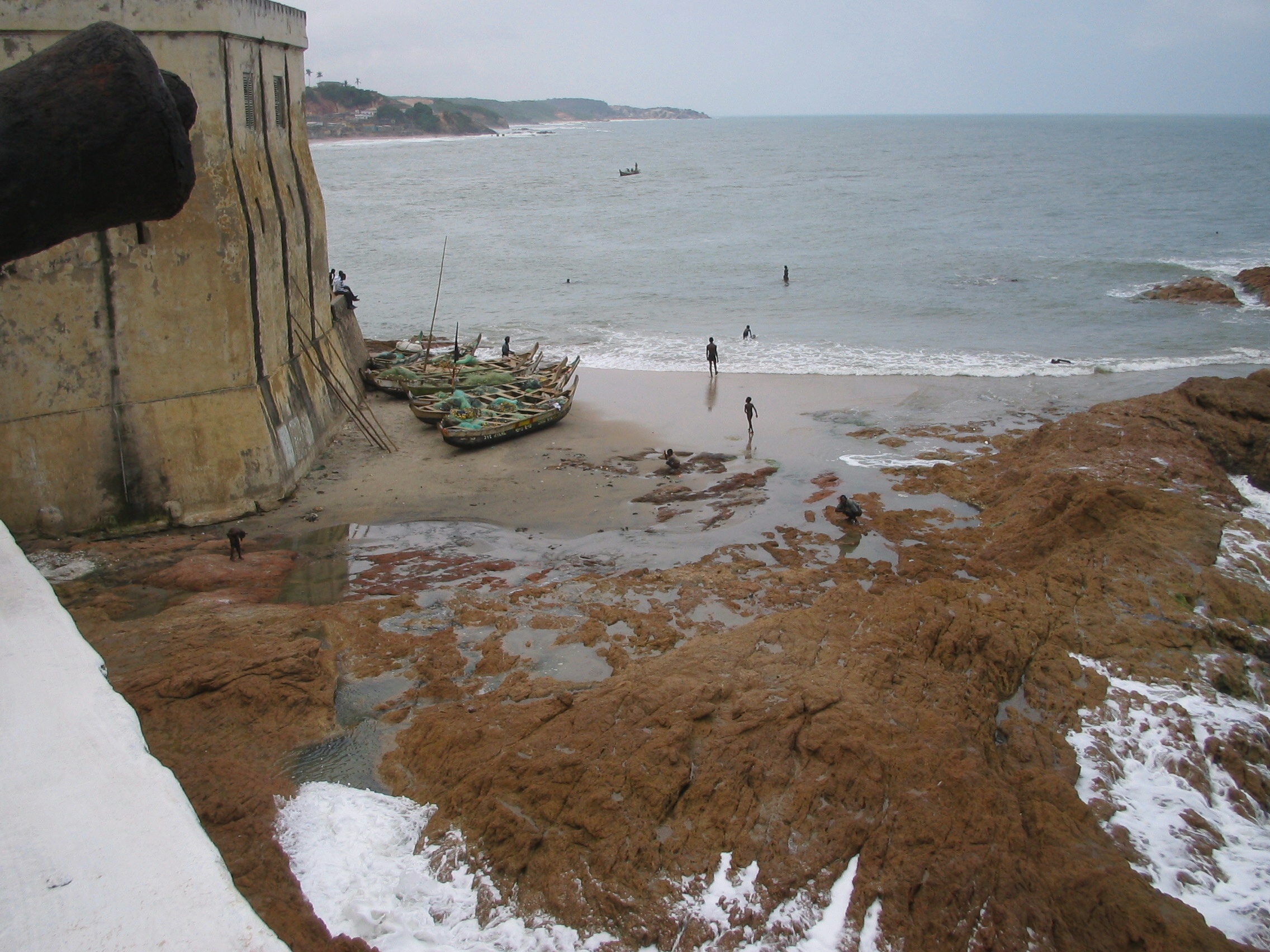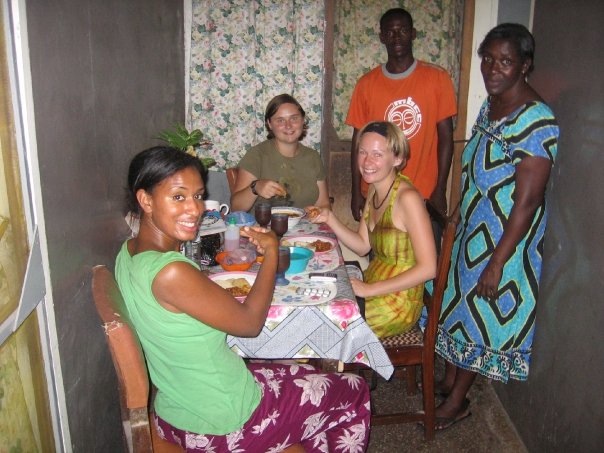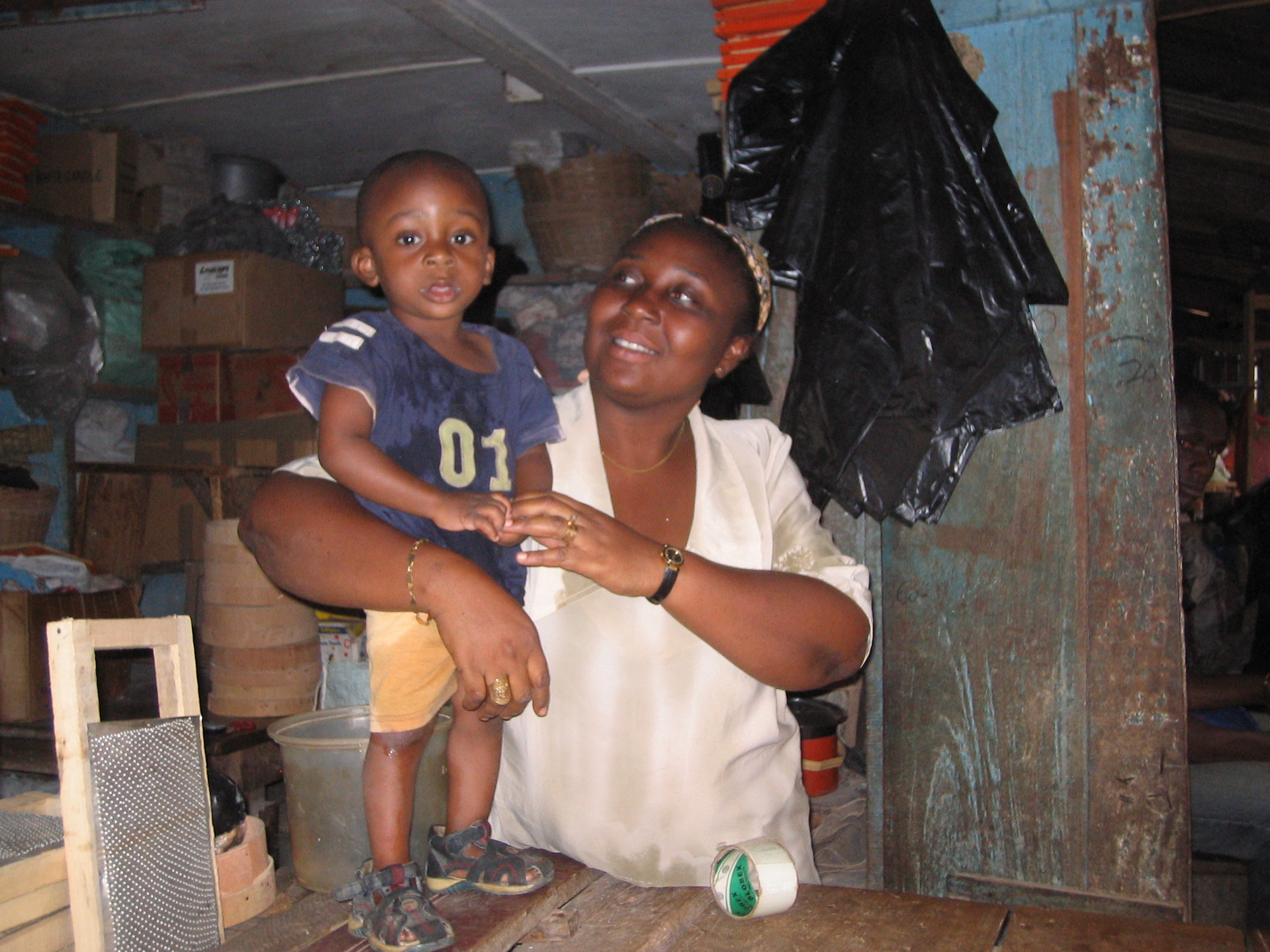 Two weeks ago, I was invited to speak on a panel at the Sojourner Truth Research Room in Oxon Hill Maryland on the subject of Ghana. The program, titled, “The Door of No Return” highlighted the relationship between Ghana and the United States, past, present and future. I was one of three panelists, who had embarked on a personal sojourn to Ghana and had crossed through the symbolic “Door of No Return” in the Cape Coast Castle.
Two weeks ago, I was invited to speak on a panel at the Sojourner Truth Research Room in Oxon Hill Maryland on the subject of Ghana. The program, titled, “The Door of No Return” highlighted the relationship between Ghana and the United States, past, present and future. I was one of three panelists, who had embarked on a personal sojourn to Ghana and had crossed through the symbolic “Door of No Return” in the Cape Coast Castle.
While the majority of the conversation focused on the past, Ghana’s role in the Trans-Atlantic slave trade, the Cape Coast Castle and the Elmina Castle, the conversation expanded to focus on tourism in Ghana, the crucial future element.
Slowly, one by one, statements were heard from the audience:
“I never knew these things existed in Ghana. Why don’t they advertise?”
“I had no idea, there were beaches in Ghana and resorts.”
“Someone should organize a tour group for people interested in finding their roots in Africa.”
“How is a person supposed to know where to stay when they go to Ghana? You can’t find information about it on Travelocity or Expedia?”
“Really, West Africa is to Europeans, what the Caribbean is to Americans. How was I supposed to know? Why isn’t African tourism promoted in the United States?”
There are many reasons why tourism in Ghana isn’t promoted widely in the United States. As the questions and ideas began to circulate, our conversation narrowed on development and how we as Americans could potentially support developing countries in Africa, such as Ghana through tourism. I was ecstatic.
I have always been firm believer in responsible, sustainable, local travel. I see travel as one of the best ways to uplift struggling communities and stimulate and revitalize local economies. There is enormous strength in our tourist power. When we as travelers make conscious decisions to journey forth in a deliberately local and sustainable way, it becomes in essence a form of quiet activism.
Europeans have been vacationing in Africa for decades, they are well aware of the beauty of the landscape. With this influx, tourist dollars are being brought to the African continent, but there is a catch. Tourism, for the sake of tourism, doesn’t always impact development. Just as there are many Europeans vacationing in Africa, there are many European run bars and hotels, which benefit from the tourists dollars. The money spent in many ways trickles back to Europe, leaving the local economy relatively untouched.
I haven’t included my photographs and travel stories from Ghana in this blog because I began working on this project long after I had traveled to Ghana, however, in the spirit of promoting tourism and stirring up curiosity, I will compile a photo essay to share. First, I will share my top ten reasons to visit Ghana. Every business/ attraction listed below is locally owned and run providing a direct benefit to the people and communities in Ghana.
10 Reasons to visit Ghana:
- Ghana has an incredibly diverse landscape. In the Cape Coast and surrounding areas, you’ll find secluded, pristine beaches. If you like large cities Accra and Kumasi are bustling business and entertainment centers. In Tamale, in the Upper Volta region you’ll find elephant and hippo safari reserves. There is something for everyone to enjoy in beautiful Ghana.
- The Cape Coast Castle and Elmina Castle are worth visiting. These former slave forts, which have now been restored and turned into museums and monuments tell the story of the Trans-Atlantic Slave trade and bear witness to those who were snatched from the shores of Ghana and forced on a passage westward. Melancholy and haunting, you should visit to remember, you should visit to experience, and you should visit to honor those who perished or passed through the dungeons and doors of no return. Just as people visit Auschwitz, these castles, are places of remembrance and bear testament to how far we have come as a civilization. On the brighter side, the Cape Coast Castle is home to a wonderful community of local artists. You can go to the shops in the courtyard and find wonderful and authentic gifts. I connected with many locals and established friendships by hanging around the castle, being present and asking questions. Ghanaians are extremely friendly and eager to swap stories and tales. The Cape Coast Café is also a great place to grab a Fanta and watch the waves of the Atlantic Ocean crash against the boulders below.
- Kakum National Park is a lush 375 square km forested park in Central Ghana. Kakum is home to jungle canopies; an exotic variety of flowers and plants, several species of monkeys, colorful birds and butterflies, and apparently, during certain seasons, forest elephants. The canopy tours are adrenaline pumping. I’m not afraid of heights, but the bridges were so narrow, and those wooden planks so delicate, that I was a bit shaken. Well worth the anxiety, the views were astonishing. I wanted so badly to spot a forest elephant, but it wasn’t meant to be.
- Nzuelo Stilt Village- Located in the middle of lake Anasuri, the Nzuelo Stilt Village is a traditional village, which has existed on the lake for the last 500 years. A photographers paradise, a visit to the village is a visit back in time. Accessible only by canoe, through snake and crocodile infested waters (how's that for adventure) you can spend the night in the village and get to know the locals who live life; in a way that is very similar to the way they lived it centuries ago. A small fishing community, women and children are often seen walking around naked and topless. My friend Alison and I made the trek in 2005. The chief and his son greeted us ceremoniously, the local women prepared traditional meals and we were allowed a rare glimpse into a way of life that is about as close as can be to tradition in this modern world. This recommendation comes with a caveat however. Female travelers, be prepared to stand your ground. Alison and I had to deal with some pretty inappropriate advances from the chief’s son and his friends. It made for some uncomfortable moments. I wouldn’t visit the village as a solo female traveler.
- Mole Game Reserve- Lions, antelope and elephants- oh my! The Mole Game reserve is Ghana’s answer to the vast Savannas of her Southern and Central African neighbors. The game reserve sits on 1300 square miles of lush land. Guides will take you through the maze of tall grass and trees. Get ready, to get surprisingly close to the wildlife. I had my first of many crocodile encounters here. Make sure to look down.
- Kumasi is the capital of the Ashanti region and hands down, one of my favorite areas in Ghana. Not only is Kumasi a culturally rich mecca seeped in tradition and history, but the Ashanti people are some of the most hospitable and generous in the world. The spirit of Kumasi is one of a kind. The stately golden Manhiya Palace, home of the royal family is a must see. A great day trip is Lake Bosomtwe, in the Rain Forest Region, the largest natural lake in Ghana. Conservation efforts are in place to preserve the lake, where the Ashanti’s believe the souls of their dead gather. Massive and warm, Lake Bosomtwe is surrounded by misty blue mountains and vibrant green forests. Donations can be made to help support local conservation efforts. Kente cloth is also produced in the Kumasi region. A stroll around town will allow you a glimpse at skillful artisans at work.
- African dance and drumming classes. With a little planning and preparation, you can take Djembe drumming and African dance classes. If you are in the Cape Coast region, you can literally go to the Coast Castle and ask for lessons, if you find yourself in another city or prefer a more structured approach, you can look online for schools and schedule a class or two in advance. However you go about it, take a class!
- African Art- Ghana is home to a broad variety of African Art. From paintings and sculptures, to carvings and Kente textiles, you can truly become immersed in the art scene. There are a variety of museums and galleries that can be visited. A few are listed below.
- The National Museum of Ghana– Accra
- The Cape Coast Castle Museum- Cape Coast
- Elmina Castle Museum- Cape Coast
- Volta Regional Museum- Ho
- Kwame Nkrumah Mausoleum and Museum- Nkroful
- Upper East Regional Museum- Bolgatanga
- Great food!!! I ate very well in Ghana. I definitely didn’t like everything, I would be lying if I said I did. In fact, Fufu, the national dish, I couldn’t stand. I did however, enjoy the fried plantains cooked to perfection in palm or coconut oil, the fresh fruit, the delicious fish, the black-eyed peas that were cooked to perfection and seasoned with tomatoes and spices. I loved the soy kabobs that could be purchased from vendors in the markets and the fresh doughnut pastries that women sold out of hot boxes balanced on their heads. There were several locally run restaurants in the Cape Coast region that I visited regularly. Ask locals for recommendations. Be adventurous and open. Western style restaurants are everywhere as well, for those of you who prefer to stick with what you know. You can also find Indian and Chinese food establishments due to the large population of Asians, particularly in Accra. And if you are a chocoholic like myself, you will be pleased to know that Ghana produces high quality cocoa. Try a Star candy bar, Ghana’s very own brand (they can be purchased at most markets and shops)- delicious!
- Visit your local Central Market!!!!!! I love Central Markets. Wherever I go, I make sure to patron the local market. You get such a great feel for a group of people and the regional culture at these gathering places. Every dollar spent also goes directly to the people and the community, which is always a good thing. In a central markets you can almost always find restaurant stalls where you can sample local food. Markets are a wonderful place to purchase locally made jewelry, clothing and art. I’ve visited many central markets across Ghana; my favorite was the Kumasi Central Market, which is the largest in Western Africa. I was able to interact with locals, learn about the many medicinal applications of Shea Butter, see various salves and tinctures being created, have a dress custom made, and I was able to purchase everything on my list – EVERYTHING!
Who should visit Ghana? Everyone should visit Ghana. Ghana is diverse in landscape, rich in culture, relatively affluent, politically stable, and is seeped in history and tradition.
My great travel goal has always been to travel to every country in Africa, capturing both in photograph, words and film, moments of beauty and promise from each country. Yes, there are some very difficult and unfortunate things going on in Africa, but Africa, and all of her 53 countries host a vast array of extraordinary beauty, promise and potential.




